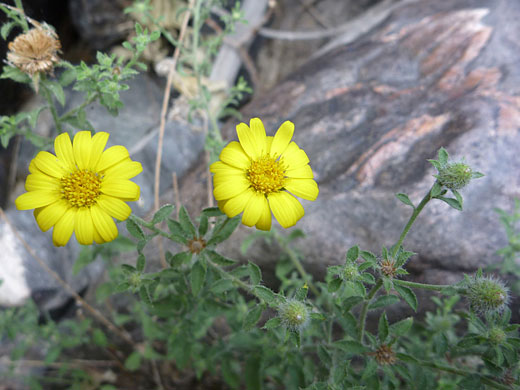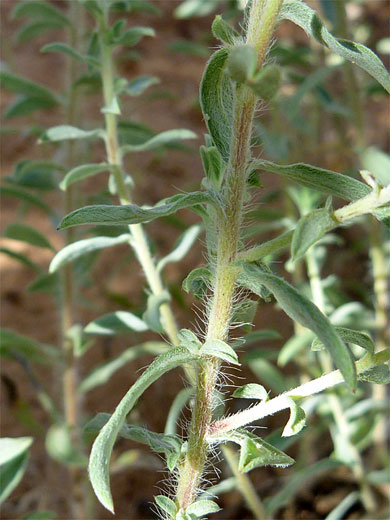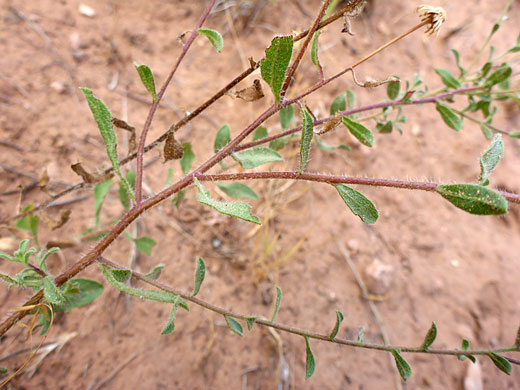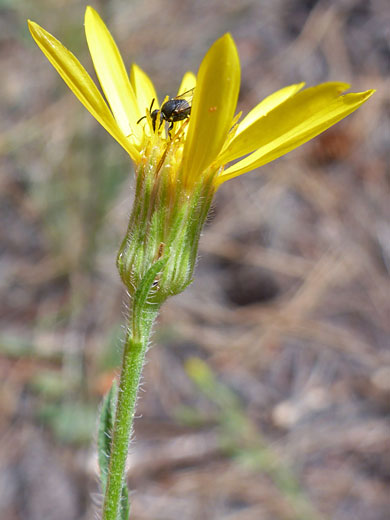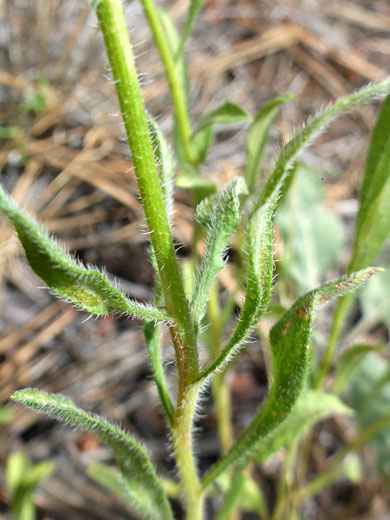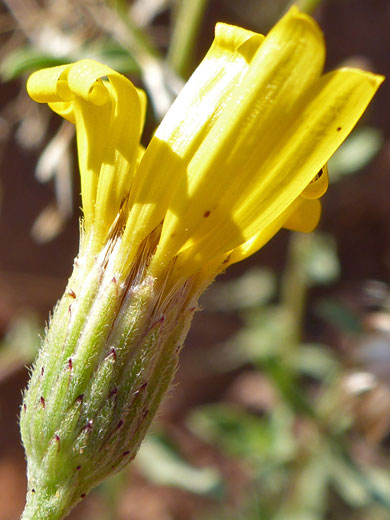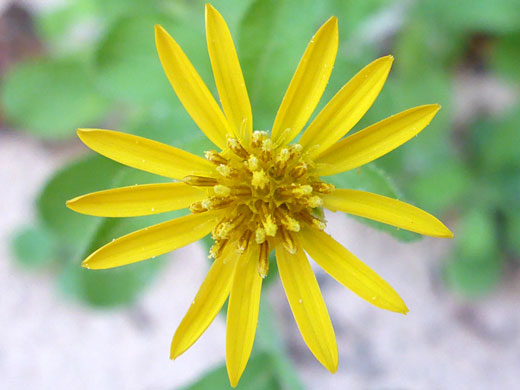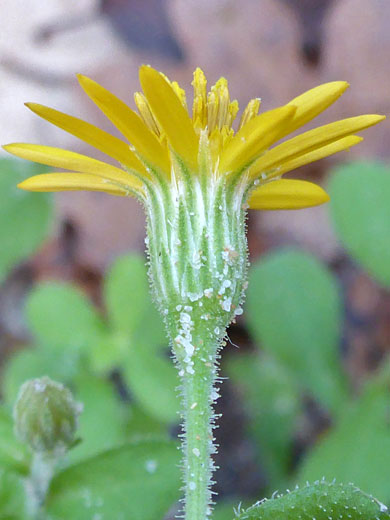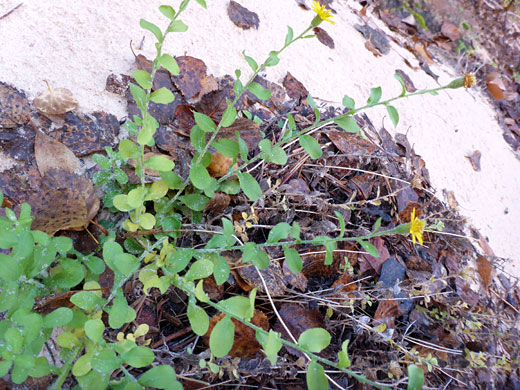
Yellow flowers, buds and hairy green leaves - golden aster (heterotheca villosa), Grand Teton National Park
Common names:
Golden aster, hairy false golden aster
Family:
Scientific name:
Heterotheca villosa
Main flower color:
Range:
All the western and Great Plains states
Height:
Between 8 and 20 inches
Habitat:
Rocky hillsides, exposed areas, roadsides, forest margins; up to 11,000 feet
Leaves:
Lanceolate to oblanceolate, greyish-green, silky, up to 3 inches long
Season:
May to October
The branched stems, small green leaves and involucral bracts of heterotheca villosa have a covering of rough, whitish hairs. Stems are topped by branched clusters of bright yellow flowers about one inch in diameter, with (usually) between 10 and 20 ray florets enclosing a center of 20 to 50 orange-brown disc florets. Leaves are narrow and lance-shaped, often widest towards the tip; they grow quite densely, and often have wavy edges. Those around the base wither before flowering. The pappus bristles, between the phyllaries and the ray florets, are white or very pale brown, and are often somewhat thicker towards the top.
The phyllaries are also lanceolate in shape, arranged in several overlapping rows; they are mostly green in color but red/purple along the edges and at the tip. The plant is rather inconsistent in terms of height, leaf shape, hairiness, glandularity and the number of ray florets; at least nine varieties are recognized.
The phyllaries are also lanceolate in shape, arranged in several overlapping rows; they are mostly green in color but red/purple along the edges and at the tip. The plant is rather inconsistent in terms of height, leaf shape, hairiness, glandularity and the number of ray florets; at least nine varieties are recognized.
All Contents © Copyright The American Southwest | Comments and Questions | Contribute | Site Map



